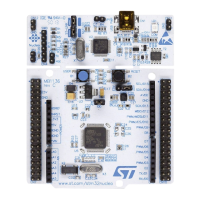) enables sampling more often.
However, increasing C
ext
limits the frequency bandwidth of measurement signal (increasing
the “external” timing constant R
in
. C
ext
).
The formulas below show how to choose the optimal C
ext
value: signal bandwidth in
correlation with sample time. Signal bandwidth is characterized by an “external” timing
constant, so optimal solution is to charge C
ext
during t
C
:
After simplification we obtain the final formula for optimal C
ext
:
and the corresponding waiting time between conversions:
Practically the firmware must not program the ADC in continuous mode but only in single
mode and must ensure that there will be a time gap between conversions with duration
equal to t
C
. This adding of waiting time is the software change which must be applied
together with the hardware change (adding an external capacitor C
ext
).
Without implementation of t
C
waiting time in software (for instance, running a conversion just
after the first one) the external capacitor C
ext
will be cyclically charged from the C
sh
capacitor. After a lot of cycles the voltage on C
ext
will reach a quite high error value (as
previously shown in Figure 36).
A practical example of implementation for STM32L1 ADC is shown below:
C
sh
= 16 pF ..... ADC property
R
in
= 150 kΩ ..... signal source property

